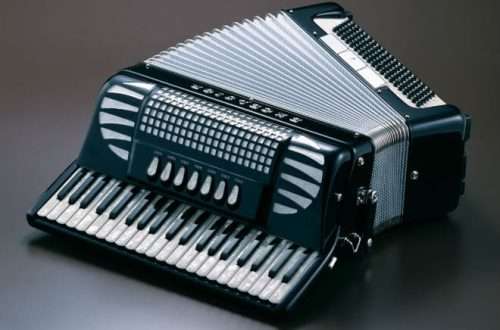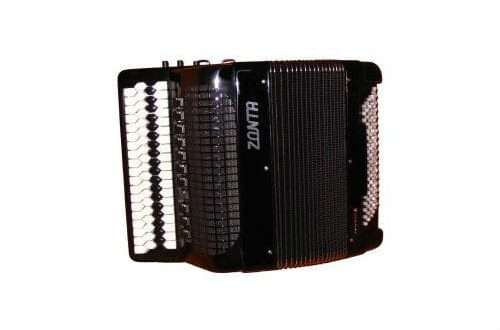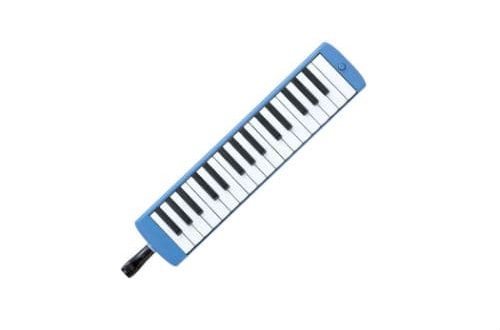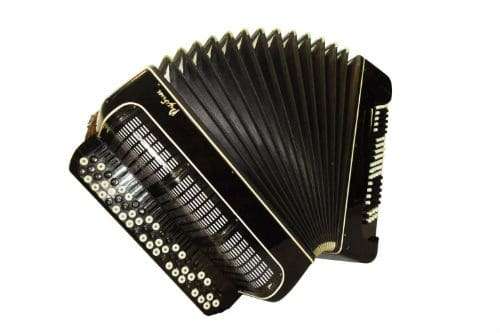
Bayan: what is it, instrument composition, sound, history, types, use
Contents
Having first appeared in Europe, the button accordion, as a kind of harmonica, rapidly spread throughout the world. But this musical instrument still enjoys the greatest love in Russia – not a single concert of folk music is unthinkable without it.
The group of instruments to which the button accordion belongs are reed, keyboard-pneumatic. This is a Russian version of a manual accordion with two keyboards. The closest relative is the accordion.

The instrument has a wide range of sound – 5 octaves. The structure of the instrument is equal-tempered.
Universal – suitable for soloists, accompanists. Sounds rich, able to replace the whole orchestra. Bayan is subject to any melodies – from folk to virtuoso, classical.
The arrangement of the button accordion is rather complicated, conditionally the instrument is divided into left and right parts, between which the furs are located.
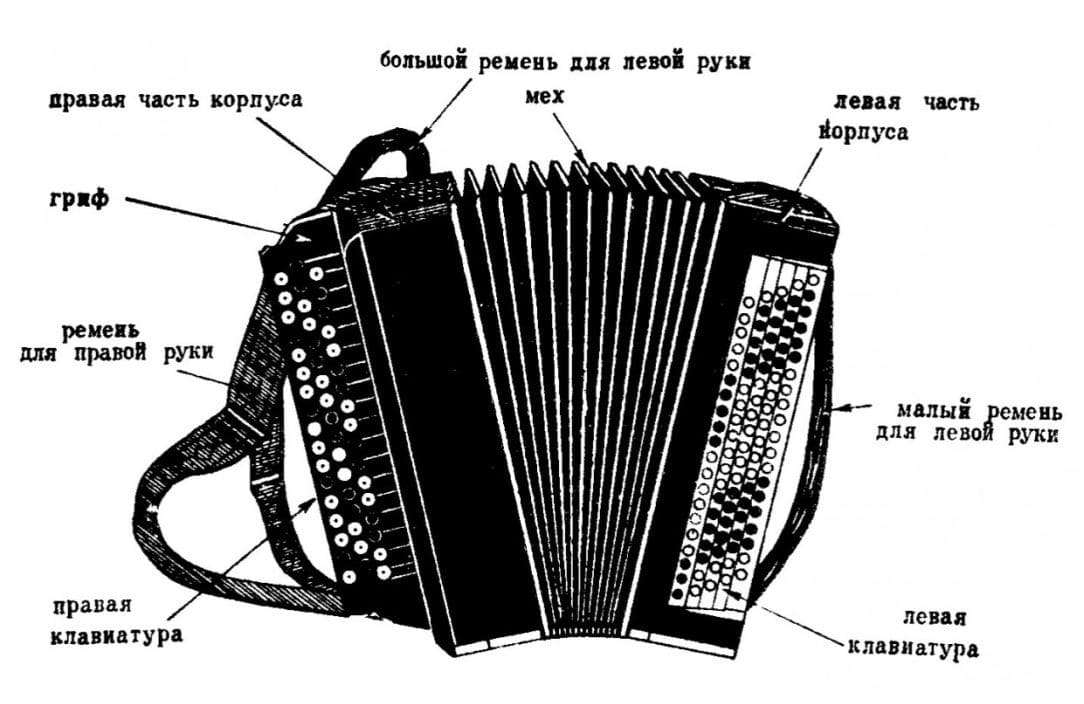
Right part
It is a rectangular box to which the neck, soundboard, special mechanisms are attached. By pressing a certain key, the performer starts the mechanism. Further, a valve is lifted inside, giving air access to the resonators.
The material of the box is wood (birch, spruce, maple).
The outer side of the neck is equipped with playing keys arranged in chromatic order. Different models may have three, four, five rows of keys.
Left side
The left box also has a keypad. Buttons are grouped in 5-6 rows. The first two rows are basses, the rest are ready-made chords. There is a special register that allows you to change the sound extraction method from ready to elective. Inside the box there is a complex mechanism with the help of which the sound can be extracted with the left hand in 2 systems: ready, ready-selective.
Fur
Purpose – the connection of the left, right parts of the button accordion. It is made of cardboard, pasted over with a cloth on top. A standard fur chamber has 14-15 folds.
The reverse side of the instrument is equipped with straps that help the performer hold the structure. The average weight of the button accordion is impressive – about 10 kg. The heaviest, orchestral models, reach a mass of 15 kg.

How does accordion sound?
The instrument is loved for its expressiveness, rich potential, wide opportunities for improvisation.
The accordion sounds are bright, rich, capable of conveying the whole gamut of human feelings, from delight to aching anguish. They are born, thanks to the vibrations of the reeds located in the vocal bars, they are quite plastic, colorful.
The presence of registers is a distinctive feature of the model, which allows you to diversify the timbre, give the sound any shade, from the tenderness of the violin to the monumentality of the organ. Professionals rightly believe that one button accordion can successfully replace a small orchestra, it sounds so impressive.
Some researchers calculate the history of the development of the button accordion for thousands of years, calling the oriental instrument “sheng” the progenitor. It appeared about 3 thousand years ago, was equipped with tongues, and subsequently improved, acquiring various forms.
The first button accordion appeared in Europe. Several masters had a hand in its creation at once: the Czech F. Kirchner, the German F. Bushman, the Austrian K. Demian. Officially, the Bavarian craftsman G. Mirwald is considered the “father” of the modern button accordion, therefore Germany is called the birthplace of the instrument.
Mirwald invented the button accordion in 1891. The master improved the model of hand harmonica familiar to everyone, providing it with a three-row keyboard, increasing the range to four octaves, and corrected a number of existing shortcomings.
European musicians were not interested in the innovation, interest in it abroad was rather weak. But in Russia, where the instrument was brought in 1892, it instantly gained popularity. They came up with a native Russian name for him – in honor of Boyan, the best ancient storyteller in Russia. Thus, we can consider the world’s first accordion as a domestic idea – in other countries this instrument has a different name.
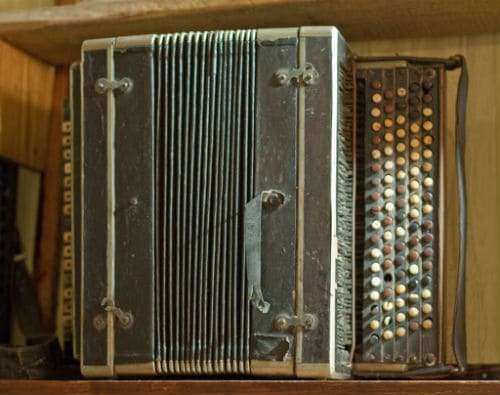
Bayans made in Russia looked different – the masters tried to diversify the model range, releasing models with a timbre reminiscent of clarinets, accordions, pianos.
The Russian novelty entered the orchestra with the light hand of master Sterligov, who designed a 4-5 row keyboard specifically for professional musicians. The structure of his model is almost identical to modern specimens.
Today, there are 2 main types – orchestral, ordinary.
Orchestral
A distinctive feature is the presence of the keyboard only on the right. There are two groups of orchestral modifications:
- Models that differ in sound range (piccolo, double bass, bass, alto, tenor, prima),
- Models that differ in timbre color (oboe, flute, trumpet, clarinet, bassoon).
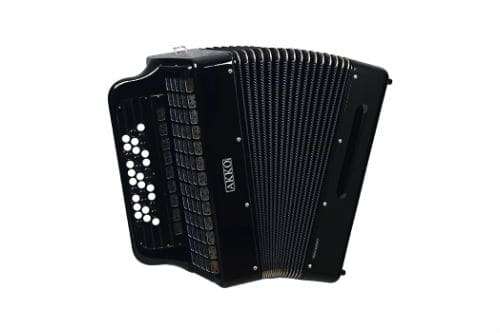
Normal
This group includes 2 types of instruments that differ in the accompaniment system provided for the left hand:
- ready – the buttons on the left are basses and ready chords,
- ready-elective – consists of 2 systems (ready, elective) with the ability to switch them through a special register. The performance characteristics of such an instrument are increased, but it is more difficult for a musician to play it.
Models are also divided by the number of votes: 2, 3, 4, 5-voice are distinguished.
Using
The versatility of the instrument, the possibility of soloing, accompaniment, allows you to use it everywhere – in folk orchestras, ensembles. All kinds of music styles, from techno to jazz, rock, include it in their musical composition.
Bayan goes well with almost all types of existing instruments – keyboards, wind, strings, percussion. It perfectly sounds the works of the classics – Beethoven, Bach, Tchaikovsky.
But most importantly, the Play on it is available to fans. Therefore, the Russian improved harmonica is often seen at weddings, home and family celebrations.



